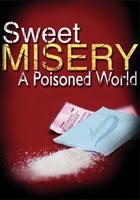Japan Times
The Nuclear and Industrial Safety Agency provided the estimate at the request of a Diet panel but noted that making a simple comparison between an instantaneous bomb blast and a long-term accidental leak is problematic and could lead to "irrelevant" results.
NISA compares contamination to Hiroshima blast
The amount of radioactive cesium ejected by the Fukushima reactor meltdowns is about 168 times higher than that emitted in the atomic bombing of Hiroshima, the government's nuclear watchdog said Friday.
The Nuclear and Industrial Safety Agency provided the estimate at the request of a Diet panel but noted that making a simple comparison between an instantaneous bomb blast and a long-term accidental leak is problematic and could lead to "irrelevant" results.
The report said the crippled Fukushima No. 1 plant has released 15,000 terabecquerels of cesium-137, which lingers for decades and can cause cancer, compared with the 89 terabecquerels released by the U.S. atomic bombing of Hiroshima.
The report estimated each of the 16 isotopes released by the "Little Boy" bomb and 31 of those detected at the Fukushima plant. NISA has said the radiation released at Fukushima was about one-sixth of that released during the 1986 Chernobyl disaster.
"Little Boy," dropped Aug. 6, 1945, destroyed most of the city and eventually killed as many as 140,000 people.
Most of the Hiroshima victims were killed in the initial heat wave, while others died from the neutron rays generated by the midair explosion or the deadly radioactive fallout. No one has died yet from radiation emitted by the Fukushima plant, where explosions caused by unvented hydrogen blew apart the upper halves of the reactor buildings but left the reactor cores in place.
The report estimated that iodine-131, another isotope that accumulates in the thyroid gland, and strontium-90, which has a 28-year half-life and can accumulate in bones, leaked from the plant in amounts roughly equal to 2½ higher than the Hiroshima atomic bomb.
A separate government report released Thursday said that 22 percent of cesium-137 and 13 percent of iodine-131 released from the plant landed on the ground, with the remainder landing either in the ocean or outside its simulation area.
The National Institute for Environmental Studies said its simulation of aerial flow, diffusion and deposition of the two isotopes released from the tsunami-hit plant showed their impact reached most of eastern Japan, stretching from Iwate Prefecture in the north and to Tokyo and Shizuoka Prefecture further south.
The study also showed that iodine-131 tended to spread radially and cesium-137 tended to create "hot spots."
Help Us Transmit This Story
Help Us Transmit This Story































No comments:
Post a Comment